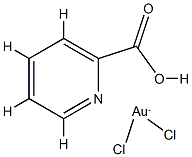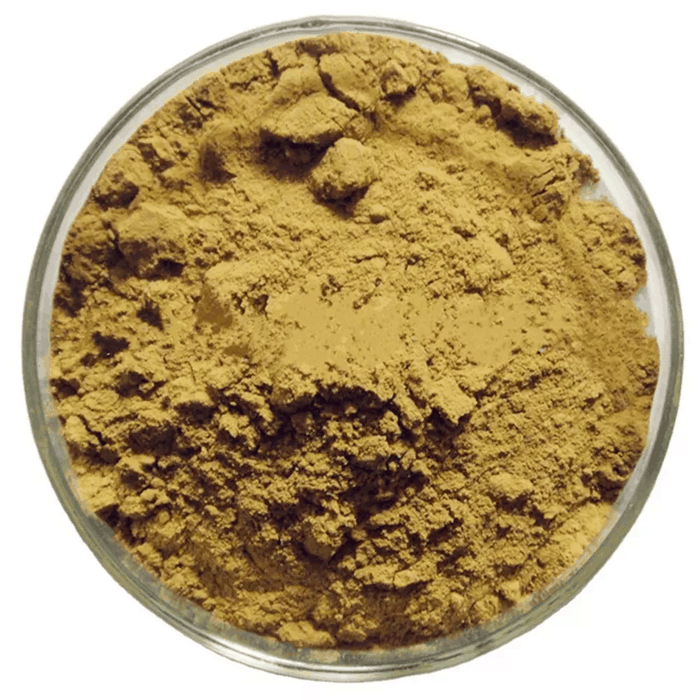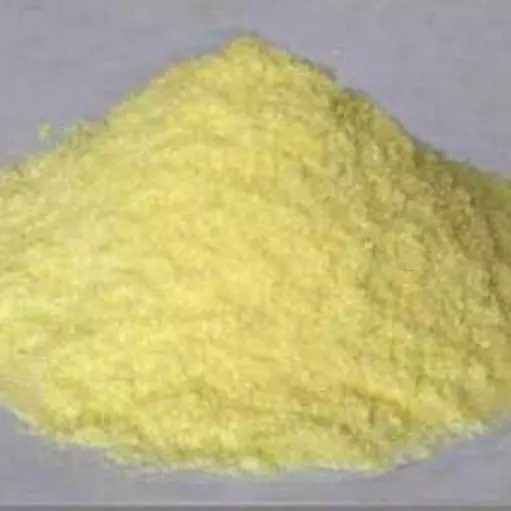DICHLORO[1,3-BIS(DIPHENYLPHOSPHINO)PROPANE]PALLADIUM(II)
Synonym(s):Dichloro[1,3-bis(diphenylphosphino)propane]palladium(II);PdCl2(dippp)
- CAS NO.:59831-02-6
- Empirical Formula: C27H26Cl2P2Pd
- Molecular Weight: 589.77
- MDL number: MFCD03844773
- EINECS: 627-387-4
- SAFETY DATA SHEET (SDS)
- Update Date: 2025-07-11 11:59:49
![DICHLORO[1,3-BIS(DIPHENYLPHOSPHINO)PROPANE]PALLADIUM(II) Structural](https://img.chemicalbook.in/CAS/GIF/59831-02-6.gif)
What is DICHLORO[1,3-BIS(DIPHENYLPHOSPHINO)PROPANE]PALLADIUM(II)?
Chemical properties
pale yellow-white
The Uses of DICHLORO[1,3-BIS(DIPHENYLPHOSPHINO)PROPANE]PALLADIUM(II)
suzuki reaction
The Uses of DICHLORO[1,3-BIS(DIPHENYLPHOSPHINO)PROPANE]PALLADIUM(II)
(1,3-Bis(diphenylphosphino)propane)palladium(II) chloride, used ubiquitously as a employed preparation of palladium for cross-coupling protocols in organic synthesis. It is also a useful organo-metallic chemical catalyst. It is also used as an important raw material and intermediate used in organic Synthesis, pharmaceuticals, agrochemicals and dyestuff. It is also used in coupling reactions.
What are the applications of Application
(1,3-Bis(diphenylphosphino)propane)palladium(II) chloride is a useful organo-metallic chemical
Properties of DICHLORO[1,3-BIS(DIPHENYLPHOSPHINO)PROPANE]PALLADIUM(II)
| storage temp. | Inert atmosphere,Room Temperature |
| solubility | Soluble in dichloromethane. |
| form | Powder |
| color | pale yellow |
| Sensitive | Air Sensitive |
| InChI | InChI=1S/C27H26P2.2ClH.Pd/c1-5-14-24(15-6-1)28(25-16-7-2-8-17-25)22-13-23-29(26-18-9-3-10-19-26)27-20-11-4-12-21-27;;;/h1-12,14-21H,13,22-23H2;2*1H;/q;;;+2/p-2 |
Safety information for DICHLORO[1,3-BIS(DIPHENYLPHOSPHINO)PROPANE]PALLADIUM(II)
| Signal word | Warning |
| Pictogram(s) |
 Exclamation Mark Irritant GHS07 |
| GHS Hazard Statements |
H315:Skin corrosion/irritation H319:Serious eye damage/eye irritation H335:Specific target organ toxicity, single exposure;Respiratory tract irritation |
| Precautionary Statement Codes |
P261:Avoid breathing dust/fume/gas/mist/vapours/spray. P280:Wear protective gloves/protective clothing/eye protection/face protection. P301+P312:IF SWALLOWED: call a POISON CENTER or doctor/physician IF you feel unwell. P305+P351+P338:IF IN EYES: Rinse cautiously with water for several minutes. Remove contact lenses, if present and easy to do. Continuerinsing. |
Computed Descriptors for DICHLORO[1,3-BIS(DIPHENYLPHOSPHINO)PROPANE]PALLADIUM(II)
| InChIKey | LDFBXJODFADZBN-UHFFFAOYSA-L |
| SMILES | P(C1C=CC=CC=1)(CCCP(C1=CC=CC=C1)C1=CC=CC=C1)C1=CC=CC=C1.[Pd](Cl)Cl |
New Products
4,4-Difluoropiperidine hydrochloride tert-butyl 9-methoxy-3-azaspiro[5.5]undecane-3-carboxylate Indole Methyl Resin N-Isopropylurea N,N-Dicyclohexylcarbodiimide(DCC) MELDRUMS ACID 5-METHYLISOXAZOLE-4-CARBOXYLIC ACID Magnessium Bis glycinate Zinc ascorbate 1-bromo-2-butyne 2-acetamidophenol 9(10H)-anthracenone Erythrosin B, 4-Piperidinopiperidine 2-((4-morpholinophenylamino) (methylthio) methylene) malononitrile 2,4-dihydroxybenzaldehyde 3-(4-morpholinophenylamino)-5-amino-1H-pyrazole-4-carbonitrile Methyl 2-methylquinoline-6-carboxylate 2,6-dichloro-4-nitropyridine 4-Bromo-2-chlorobenzonitrile 2-(benzylamino)acetic acid hydrochloride 4-(tert-Butoxycarbonylamino)but- 2-ynoic acid 3,4-dihydro-2H-benzo[b][1,4]dioxepine 1-Phenyl-1-cycloprppanecarboxylicacidRelated products of tetrahydrofuran

![[1,1'-Bis(diphenylphosphino)ferrocene]dichloropalladium(II)](https://img.chemicalbook.in/CAS/GIF/72287-26-4.gif)

![Diacetato[(R)-(+)-2,2'-bis(diphenylphosphino)-1,1'-binaphthyl]ruthenium(II)](https://img.chemicalbook.in/CAS/20181022/GIF/325146-81-4.gif)

![[1,2-Bis(diphenylphosphino)ethane]dichloropalladium(II)](https://img.chemicalbook.in/CAS/GIF/19978-61-1.gif)
![Diacetato[(S)-(-)-5,5'-bis(diphenylphosphino)-4,4'-bi-1,3-benzodioxole]ruthenium(II)](https://img.chemicalbook.in/CAS/GIF/373650-12-5.gif)
![Diacetato[(S)-(-)-2,2'-bis(diphenylphosphino)-1,1'-binaphthyl]ruthenium(II)](https://img.chemicalbook.in/CAS/20210111/GIF/261948-85-0.gif)
You may like
-
 59831-02-6 (1,3-Bis(Diphenylphosphino)Propane)Palladium(II) Chloride 98%View Details
59831-02-6 (1,3-Bis(Diphenylphosphino)Propane)Palladium(II) Chloride 98%View Details
59831-02-6 -
 59831-02-6 99%View Details
59831-02-6 99%View Details
59831-02-6 -
![Dichloro[1,3-bis(diphenylphosphino)propane]palladium(ii) CAS 59831-02-6](https://img.chemicalbook.in//Content/image/CP5.jpg) Dichloro[1,3-bis(diphenylphosphino)propane]palladium(ii) CAS 59831-02-6View Details
Dichloro[1,3-bis(diphenylphosphino)propane]palladium(ii) CAS 59831-02-6View Details
59831-02-6 -
![[1,3-Bis(diphenylphosphino)propane]palladium(II) Dichloride CAS 59831-02-6](https://img.chemicalbook.in//Content/image/CP5.jpg) [1,3-Bis(diphenylphosphino)propane]palladium(II) Dichloride CAS 59831-02-6View Details
[1,3-Bis(diphenylphosphino)propane]palladium(II) Dichloride CAS 59831-02-6View Details
59831-02-6 -
 (1,3-Bis(diphenylphosphino)propane)palladium(II) chloride CAS 59831-02-6View Details
(1,3-Bis(diphenylphosphino)propane)palladium(II) chloride CAS 59831-02-6View Details
59831-02-6 -
 20677-73-0 (2,2-diethoxyethyl)methylamine 98%View Details
20677-73-0 (2,2-diethoxyethyl)methylamine 98%View Details
20677-73-0 -
 3-(4-(hydroxyamino)-1-oxoisoindolin-2-yl)piperidine-2,6-dione 98%View Details
3-(4-(hydroxyamino)-1-oxoisoindolin-2-yl)piperidine-2,6-dione 98%View Details -
 57381-49-4 2-bromo-4-chlorobenzonitrile 98%View Details
57381-49-4 2-bromo-4-chlorobenzonitrile 98%View Details
57381-49-4
Statement: All products displayed on this website are only used for non medical purposes such as industrial applications or scientific research, and cannot be used for clinical diagnosis or treatment of humans or animals. They are not medicinal or edible.
